Covering the topics of abattoirs and protection of cows is beyond the scope of one article, one can write an entire book about this. This issue has been a bone of contention since the days of jihadi fanatic rulers. Though we are an independent country now, our cows which were considered as wealth (Gou-dhan) are still bound by green chains. Even if a single person is inspired to act against illegal cow slaughter, then we will consider this article to have performed its job.
1. Cow slaugher – the sinful legacy of the Jihadi invaders
The Islamic custom of animal sacrifice (known as ‘kurbani’) originated in the Arab countries, where animals like camel and goats would be offered as sacrifice. The Quran does not mention that cows should be sacrificed; but the Jihadi invaders had recognised early on that the Hindus have high regard for the Cows. So they used indiscriminate cow slaughter as a means to wage a surrogate war to finish the kaffirs.
History shows that cow slaughter is practiced neither for purpose of meat nor as a religious custom, but as a strategy to demoralise Hindus by hurting their religious sentiments while citing these reasons. When Afzal Khan launched an attack on Shivaji Maharaj, he attacked Tulajapur to force Shivaji Maharaj out from the impregnable terrain. He vandalised the Idol of Goddess Bhavani and also killed a cow in the same premises. Aurangzeb not only had the Vitthal-Rukhmini temple at Pandharpur destroyed, but also ordered slaughter of cows at the place of temple, so rivers of blood would flow there. History is witness to deceptive tactics like leading cows on the battlefield so that the invaders could attack from behind and kill Hindus (who would not want to harm cows). Even Nehru, who said ‘I am Hindu only by accident’, has not done anything about this.
2. Indian constitution mentions about protecting cows, also the Supreme Court of India and Maulana Abul Qasim Naumani of Darul Uloom Deoband have expressed a similar opinion.
Babasaheb Ambedkar had understood the importance of protecting cows, though he was critical of Hindu Dharma. According to article 51 of constitution, the responsibility of protecting cows lies with the Government. But the Congress government defied Ambedkar even here. (Has the RPI MP Mr. Ramdas Athavale taken any strong stance against this?)
The Supreme Court has firmly stated that the Quran does not mention that it is necessary to sacrifice cows. (Mohd. Hanif Quareshi & Others vs The State of Bihar – 1958 AIR 731). This point was clarified by the Darul Uloom Deoband, the highly respected Islamic body in the year 2011. Maulana Abul Qasim Naumani of Darul Uloom Deoband has given a statement that during the Eid cows should not be sacrificed and the feelings of Hindus should be respected. Despite this cow slaughtering continues unabated in many parts of India. The basic ideology behind this is a treachery and ‘kafir’ Hindu hatred. So, when economy, religion and food habits do not call for cow slaughter, besides Jains and Hindus are emotionally attached to the cow, still cows are slaughtered, what does this mean?
3. The specific difficulties faces by Gaurakshaks and their solutions.
Hindu Vidhidnya Parishad was established 3 years ago, and for the past 10 months is also active in Gauraksha. The difficulties in this work and solutions are given ahead.
3 A. Lack of legal know how among Gaurakshaks : The Gaurakshaks are working with intense yearning to protect cows by maintaining day and night vigils on the vehicles that transport cows, by stopping such vehicles, and handing the vehicle over to the police station. They also rescue the cows (animals) and send them to Gaushalas. However, in Satara district, when the police were called after one such vehicle was found, the police acted strangely. Instead of filing a report they said that they are taking the animals back to owner. The vehicle driver claimed that the owner was a Hindu. But it was very much doubtful whether the cattle will be taken back to owner or not. Instead of aggressively demanding proper action, the Gaurakshaks believed in police due to lack of legal knowhow.
3 B. Act on transportation the Cows : Rule about transportation of animals 1978 had been drafted under the point 38(2)(H) of Prevention of Cruelty to Animals Act, 1960. These rules contain detailed information about how to transport even rabbits and monkeys and the necessary caution one should take. Rule no 47, pertains to cows and is provided below. Each rule and its brief summary is given ahead.
3 B 1. Transportation of animals (1978)
By definition, family of cow includes cows, bulls, buffaloes, Yak and calves.
Rule 47 : A certificate from veterinary doctor is necessary while transporting cows.
The certificate should mention the points given ahead
-
The cows are in proper physical health to undertake journey in train cars or other vehicles.
-
They are not infected with any disease.
-
All cows have been properly vaccinated.
The railway authorities or the driver of the transport vehicle should refuse to transport such cattle in case the certificate is not available.
The certificate must be in a format specified in the law.
Rule 48 : The vehicles transporting cows must have veterinary first aid kit.
Rule 49 : The description mentioned ahead must be printed in bold red letters on each vehicles used for transportation of animals.
-
The address and contact number of the sender.
-
The address and contact number of receiver.
-
The number of cows being transported and their breed.
Rule 50 : Each cow should have minimum space of 2 square meters while being transported via railway or 4 wheeler vehicle.
Rule 51 : The right loading platform and rope system should be used while loading the cattle into vehicles.
Rule 52 : Before the start of journey animals should be fed and watered properly.
Rule 53 : Pregnant cows should not be kept with young cows or bulls. (There are chances of the foetus and mother being injured in case of stampede)
Rule 54 : Drinking water should be provided during the journey, and water should also be stored in the vehicle for any emergency.
Rule 56 : While transporting cattle the following rules ought to be followed.
-
The vehicle’s inner walls must be properly padded so that the cows will not be hurt in case they hit the walls.
-
The floor of the vehicle should be covered with non-slip matting.
-
One vehicle should not carry more than 6 cows.
-
Each vehicle must have one attendant to take care of cows.
-
Other material should not be transported along with the cows.
Rule 55 details the care that should be taken during railway transportation. For example,
-
In general the goods wagon of the railway is permitted to carry a maximum of 10 cows and 15 calves on a broad gauge line, 6 and 10 on meter gauge line and 4 and 6 on narrow gauge respectively.
-
Each wagon should have at least one attendant to take care of cows.
-
The cows should be tied in the direction of railway movement only, not across.
-
Minimum 6 inch thick layer of grass should be laid on the floor (at bottom of wagon) (so that cows will not be hurt)
-
The wagon should be well ventilated and fire prevention measures must be taken.
-
The wagons carrying cows should be in the center of the train.
3 B 2. A fitness certificate from a veterinary doctor is necessary for transporting cows and breaking of any rule is a serious offence : While transporting cows, a fitness certificate form a veterinary doctor in the prescribed format is necessary. If such certificate is not available then as per the rule 177, an offence can be booked under the rule of not carrying appropriate documents. The fine for this is 100 rupees.
If any rule is broken then under the article 11 (1) (D) of Prevention of Cruelty to Animals Act, 1960, an offense of behaving cruelly with animals can be booked, fine for that is rupees 50; but if this offence is repeated within 3 years then an imprisonment of 3 months can be awarded. The police can arrest the culprit without an arrest warrant under Bombay Police act ’73 and they can complete the process of relocating cows to a Gaushala under the article 74.
All the above laws are under central government and the study of laws under state government can be useful in case points given ahead.
-
District level body against animal cruelty: Each district should have a ‘prevention of cruelty against animals’ body. The Gaurakshaks can be members of such body with many direct and indirect powers. (We will shortly publish the government ruling about this)
-
State level animal welfare committee: Names of the members of this committee has been given along with this aticle. Even this members have many direct and indirect powers. (Names of the members and their address, two government orders which has the description of powers they have has been printed as it is along with this article, Gaurakshaks can make use of it)
3 B 3. It is necessary for Gaurakshaks to pressurise the government the way smugglers are doing. : Definitely using the above 2 processes, we can pressurise the government. The smugglers and those who are running illegal abattoirs exert a lot of pressure on the government through legal as well as illegal means. The government and authorities succumb to such pressure and cow slaughter is still going on. It is necessary to generate such pressure on government by the Gaurakshaks and this can be useful for that.
8. SCHEDULE – H
[See Rule 47 of Transport of Animals Rules 1978 – U/s 38 of the Prevention of Cruelty to
Animals Act]
Pro-forma for Certificate of fitness to travel Cattle
This Certificate should be completed and signed by a qualified Veterinary Surgeon
Date and time of examination : …………………………………………..
Species of cattle : …………………………………………………………..
Number of Trucks / Railway Wagons …………………………………..
Number of cattle : ………………………….. ……………………………..
Sex……………… Age ……………………………………
Breed and identification marks, if any …………………………………..
Transported from ……………… To ……………….Via………………….
I hereby certify that I have read rules 46 to 56 in Chapter IV of the Transport of Animals
Rules, 1978.
1. That, at the request of (consignor) ………….I have examined the above mentioned Cattle in the goods vehicle/ railway wagons not more than 12 hours before
their departure.
2. That each cattle appeared to be in a fit condition to travel by rail/road and is not
showing any signs of infectious or contagious or parasitic disease and that it has been
vaccinated against rinderpest and any other infectious or contagious or parasitic
diseases(s).
3. That the cattle were adequately fed and watered for the purpose of the journey.
4. That the cattle have been vaccinated.
(a) Type of vaccine :
(b) Date of vaccination:
Signed …………………………………………………
Address ……………………………………………
Qualifications …………………………………………
Compiled by : Advocate Virendra Ichalkaranjikar, President, Hindu Vidhindnya Parishad.

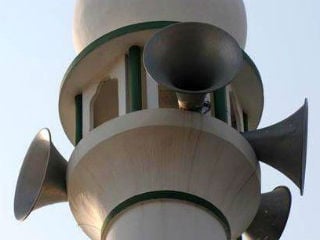 Police and Pollution Control Board rendered ‘deaf’ due to Noise Pollution by Mosques and Dargahs.
Police and Pollution Control Board rendered ‘deaf’ due to Noise Pollution by Mosques and Dargahs.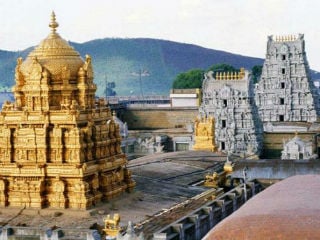 Propagation of religion other than Hinduism in Tirupati Tirumala is an offense
Propagation of religion other than Hinduism in Tirupati Tirumala is an offense Crusade against Obscenity
Crusade against Obscenity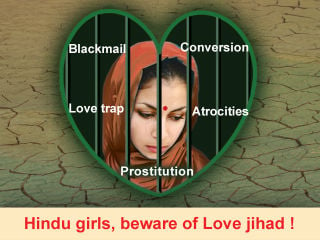 Kerala High court order on Love Jihad
Kerala High court order on Love Jihad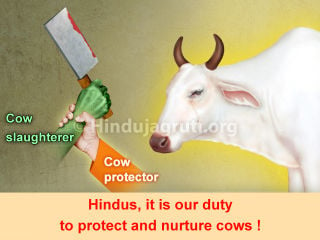 Legal guidance regarding Cow Protection and slaughter house
Legal guidance regarding Cow Protection and slaughter house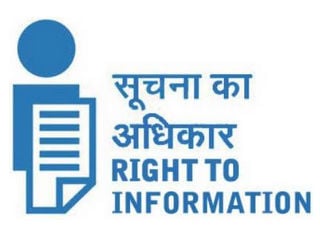 Right to Information Act – How to use it
Right to Information Act – How to use it